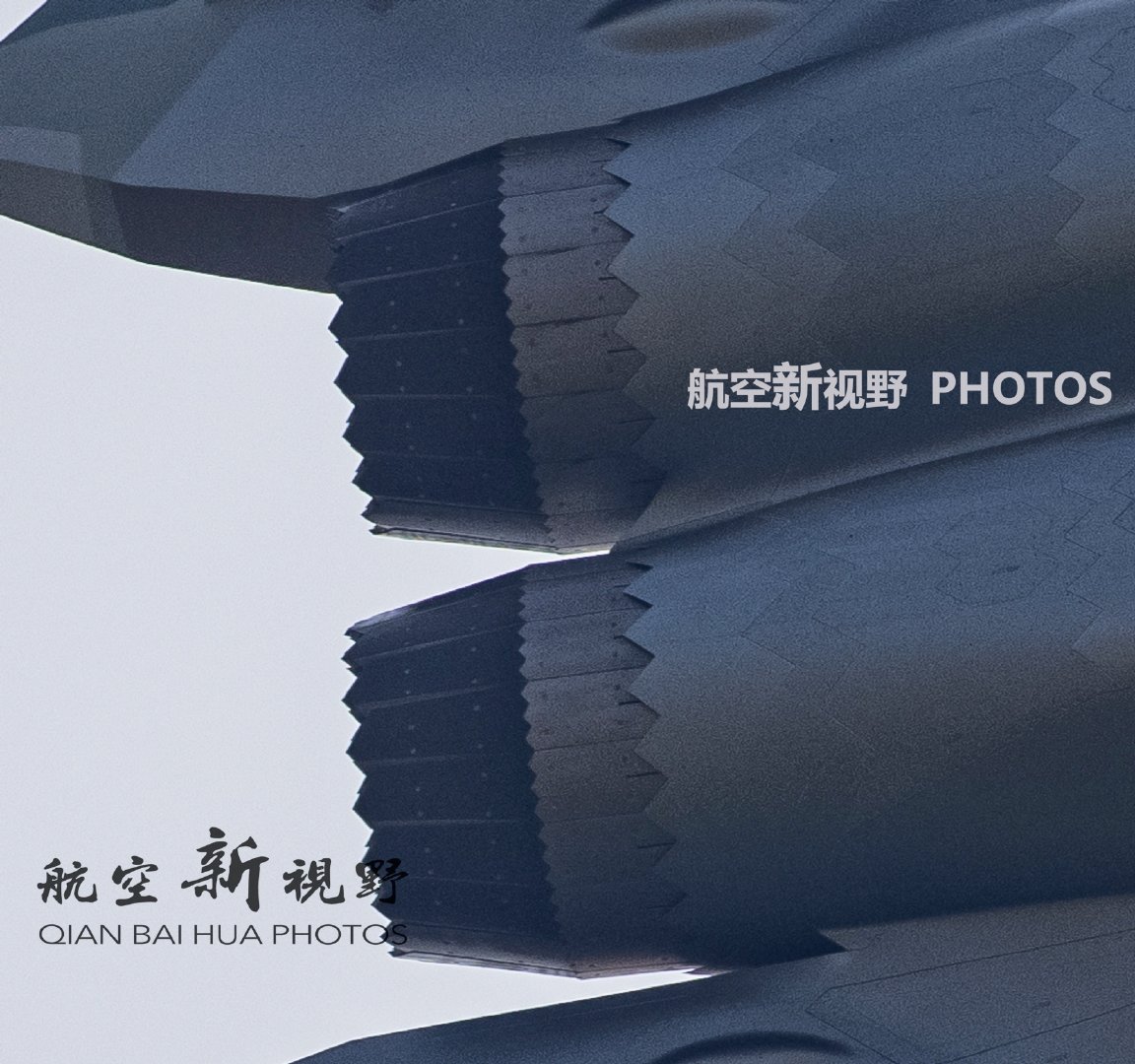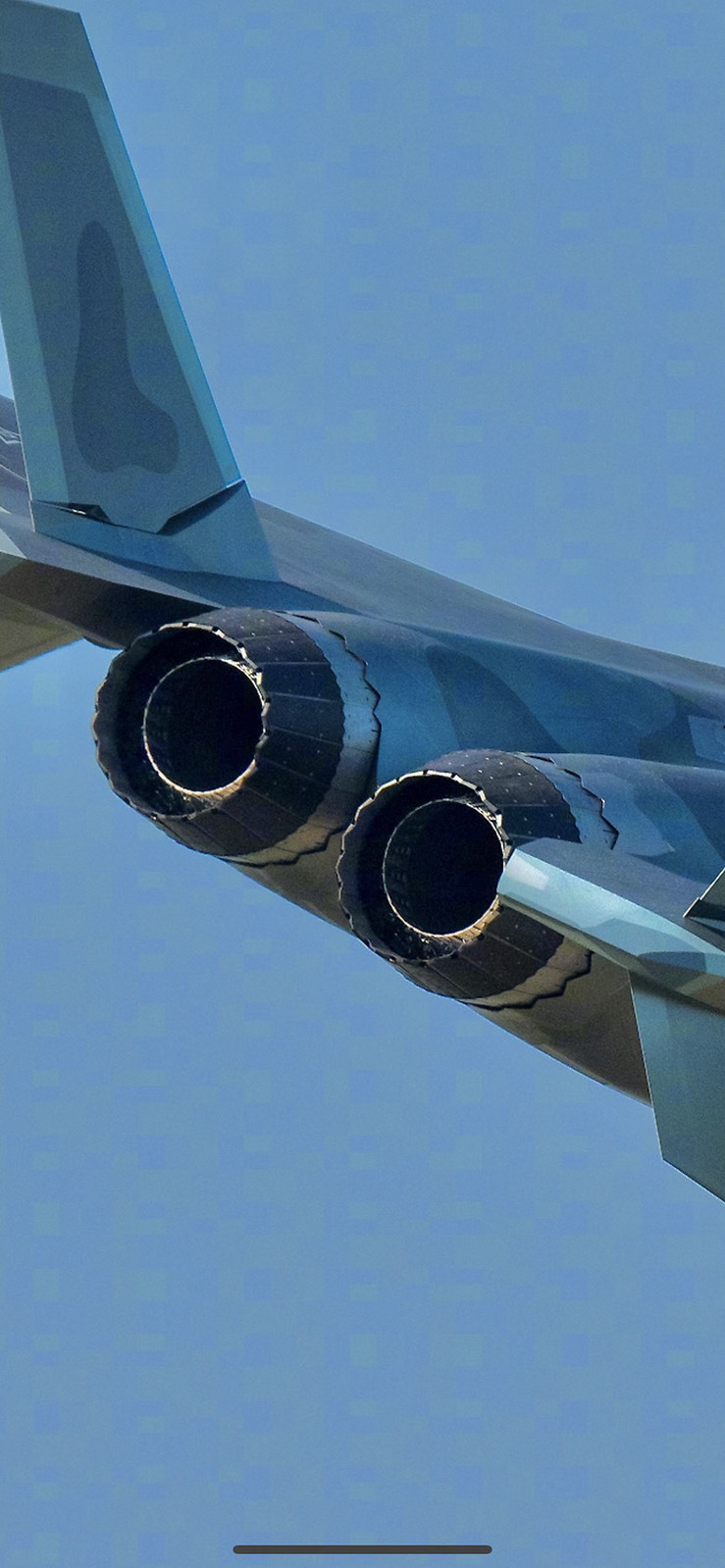Minimum 137 kN. Might be 142 kN (as with upgraded Al-31), but 155 kN is fairly aggressive.Sorry for one liner but i've to ask, Does anyone knows thrust of WS-10C engine installed on J-20.
You are using an out of date browser. It may not display this or other websites correctly.
You should upgrade or use an alternative browser.
You should upgrade or use an alternative browser.
J-20 5th Generation Fighter VII
- Thread starter siegecrossbow
- Start date
- Status
- Not open for further replies.
Clearly looks like TVC deflection here. Could it be that the nozzles are some kind of novel convergent TVC? More likely, the nozzles are just in different levels of concentration, which creates the optical illusion of TVC deflection.Nice. Here's more close-up of WS-10C.




About 155 kilonewtons I think.
No way unless they want to swap out the engine every time the plane returns to base.
Wow, that’s the highest number for WS10 that I have ever heard of.About 155 kilonewtons I think.
Seriously, I would be extremely surprised if it exceeds 140kn.
Wiki fanboys claimed it was 155 kN (WS-10G).Wow, that’s the highest number for WS10 that I have ever heard of.
Seriously, I would be extremely surprised if it exceeds 140kn.
The biggest mystery I have right now is why the J-20 with WS-10C nozzles keep on showing seemingly non-parallel nozzle alignments. The design can't be TVC, can it? We already know what the WS-15 TVC nozzle is going to look like (i.e, the J-10B TVC demonstrator's nozzle). But could it be that the WS-10C has a novel TVC?
Wiki fanboys claimed it was 155 kN (WS-10G).
The biggest mystery I have right now is why the J-20 with WS-10C nozzles keep on showing seemingly non-parallel nozzle alignments. The design can't be TVC, can it? We already know what the WS-15 TVC nozzle is going to look like (i.e, the J-10B TVC demonstrator's nozzle). But could it be that the WS-10C has a novel TVC?
It’s probably a camera angle thing. It looks nothing like a TVC nozzle.
Last edited:
non-parallel nozzle angles may result from the engine thrust line angle being offset from the centreline. Su-27 engines are angled from centreline for example.Wiki fanboys claimed it was 155 kN (WS-10G).
The biggest mystery I have right now is why the J-20 with WS-10C nozzles keep on showing seemingly non-parallel nozzle alignments. The design can't be TVC, can it? We already know what the WS-15 TVC nozzle is going to look like (i.e, the J-10B TVC demonstrator's nozzle). But could it be that the WS-10C has a novel TVC?
By the way, an ejector nozzle like that on the M88 engine is still convergent-divergent. There's seems to be some confusion about this here. The central air flow from inside the smaller inner nozzle expands out through the larger diameter outer nozzle. Its just normally a little less efficient than an iris nozzle - which effectively puts a third ring of petals sealing the inner ring to the outer ring.
Which is still the weird question: the Chinese can do iris nozzles. Why set up an ejector nozzle? I disagree with Tirdent about the IR benefits due to Planck's Law (IR emission increases exponentially with temperature, so a mass of cooler air diffusing the main stream outside the nozzle isn't better than the air mixing inside the nozzle), unless it's intended to hide the IR behind other features. Looking at the tailbooms, that might be the case, since you'd be able to block a concentrated IR emission (as opposed to a diffuse IR emission) with a regular nozzle.By the way, an ejector nozzle like that on the M88 engine is still convergent-divergent. There's seems to be some confusion about this here. The central air flow from inside the smaller inner nozzle expands out through the larger diameter outer nozzle. Its just normally a little less efficient than an iris nozzle - which effectively puts a third ring of petals sealing the inner ring to the outer ring.
What iris nozzle did they build before WS-10 was designed? Serious question.Which is still the weird question: the Chinese can do iris nozzles. Why set up an ejector nozzle? I disagree with Tirdent about the IR benefits due to Planck's Law (IR emission increases exponentially with temperature, so a mass of cooler air diffusing the main stream outside the nozzle isn't better than the air mixing inside the nozzle), unless it's intended to hide the IR behind other features. Looking at the tailbooms, that might be the case, since you'd be able to block a concentrated IR emission (as opposed to a diffuse IR emission) with a regular nozzle.
I think the "new WS-10 nozzle" on J-16 is an iris design. Not sure why they would stick with the older design for J-20.
- Status
- Not open for further replies.
